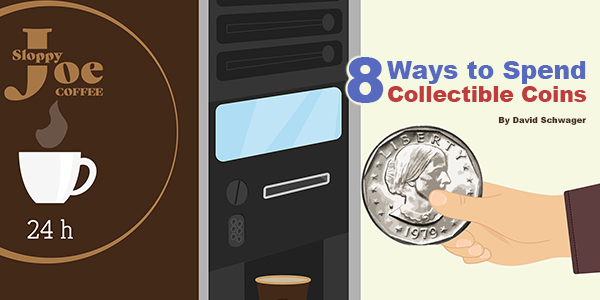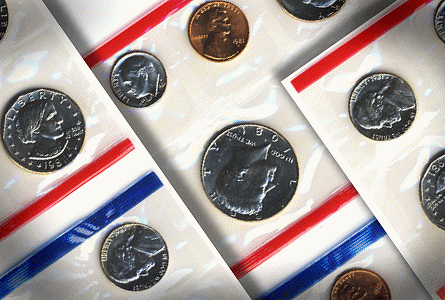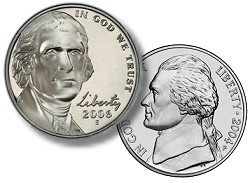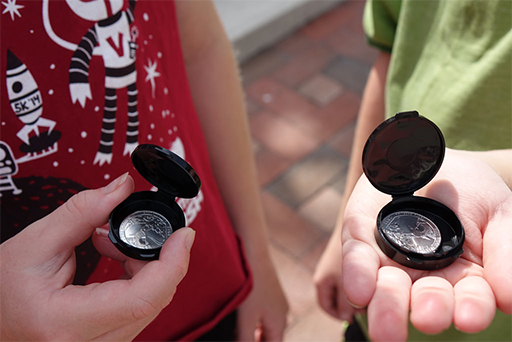
By David Schwager for CoinWeek …..
Roll searchers (collectors who obtain coins in bulk from banks and look through them for interesting or valuable pieces) constantly find coins to add to their collections. Where do these coins come from?
Someone is doing the opposite of roll searching: spending collectible coins.
Some coins, like proofs or commemoratives, began their lives as prized collectibles. Most, however, started as “just money” before making the transition to appreciated numismatic objects. It is understandable that some coins re-cross that fine line between small change and object of desire, returning to their humble status as circulating money. Numismatic coins find their way into circulation through several paths, and I will confess to using nearly every one of them. If this seems like blasphemy, leave your hate mail in the comments below. Returning coins to the wild, however, can be motivated by generous impulses and a love for our hobby.
1. Breaking Up Sets
Plenty of collectors look through government-issued mint sets and proof sets for superior coins. But the not-so-superior coins have to go somewhere. When I assembled a set of Eisenhower dollars, for example, I got most of the clad examples from proof sets and mint sets. Once you cut one coin out of a 1977 mint set, however, the incomplete set becomes worthless as a collectible. The best way to dispose of the remaining coins is to put them in the change jar. Other sets have so little premium, even when intact, that using them at face value is a reasonable choice. I won a Mint-sealed 2007 Presidential dollar proof set with four coins in a raffle. A little research found that this high-selling first year set retails for about $5. Putting the four dollars into the coin-op car wash was more practical than working to extract the extra fifth dollar of value.
 2. Specialized Change
2. Specialized Change
That same car wash, which uses only dollar coins, is also a source of coins that once sold for more than face value. Its change machine has yielded Taft, Kennedy, and other Presidential dollars never made for circulation. Needing a steady supply of coins, the owner apparently bought bags of fresh dollars from the Mint and poured them into the hoppers. One video arcade, instead of having tokens minted, set its machines to take Canadian nickels. Continuing with dollar coins, many of us can remember the slight disappointment of receiving Anthony dollars from post office stamp vending machines.
3. One Man’s Trash Is Another Man’s Treasure
Just as those Anthonies might be spent by some people and saved as curiosities by others, some circulating coins have value to only a few of their users. Although silver appears infrequently in commerce, one type of coin worth more as metal than as money turns up in change nearly every day. Made of 95% copper, 1959 – 1981 Lincoln Memorial cents are worth about 1.8 cents each as scrap metal and some collectors or hard money enthusiasts set these aside. I have about 13,000 left from my roll searching days. Most people, understandably unimpressed by the premium of less than one cent, spend these potential collectibles, putting them back into circulation. Similarly, while most of us don’t give circulated 1950s nickels a second look, they do have a numismatic premium and earn about eight cents each in bulk. These modest collectibles also routinely go into bank deposits and CoinStar machines to be spent again.
4. Not Collectible Yet
 Medals, non-circulating legal tender, bullion, and many other classes of numismatic objects were cherished possessions from the day they were made. Most coins, however, were made to be spent and served their purpose well. For example, 60 or 70 years ago, when silver still circulated, people spent collectible coins all the time. Growing up in 1940s and ’50s Idaho, my father remembers storekeepers foisting heavy, unwanted silver dollars on children or other people too timid to complain. Those coins were collectible, but not yet. This isn’t limited to 20th-century coins, precious metal coins, or US coins. That brass Roman sestertius was made to be used and was part of a worker’s wage before it was part of a collector’s cabinet.
Medals, non-circulating legal tender, bullion, and many other classes of numismatic objects were cherished possessions from the day they were made. Most coins, however, were made to be spent and served their purpose well. For example, 60 or 70 years ago, when silver still circulated, people spent collectible coins all the time. Growing up in 1940s and ’50s Idaho, my father remembers storekeepers foisting heavy, unwanted silver dollars on children or other people too timid to complain. Those coins were collectible, but not yet. This isn’t limited to 20th-century coins, precious metal coins, or US coins. That brass Roman sestertius was made to be used and was part of a worker’s wage before it was part of a collector’s cabinet.
5. Spending Your Collection
Tastes change, speculation doesn’t work out, and sometimes face value is the best exit.
In 1999, for example, people put aside rolls of 50 State quarters, hoping their value would rise. This did not happen for most issues, and mint state quarters from these rolls continue to find their way back into circulation. They were especially common during the Great Recession that started in 2008, when their $10 per roll face value became a temptation. Most recent circulated star notes are also worth only face value. When a fellow collector paid me for a coin with a lightly used 2009 $100 star, he decided that the numismatic premium wasn’t worth tying up a hundred bucks. I made the same decision and spent the bill at a gas station a few days later.
6. Spending Someone Else’s Collection
Sometimes this happens out of ignorance, when a child or uninformed heir raids the junk silver stash to satisfy their need for candy or cigarettes. The less said about this potential numismatic horror story, the better. But even well informed, ethical, sensitive dealers and collectors realize that most collections include spendable material.
A dealer I know looked through a US currency accumulation collected from circulation by a store owner. He bought the items with premiums, like Hawaii notes, and advised the family to deposit those without premium, such as worn 1934 Federal Reserve notes. Those older bills probably became material for a good story on the Web forums a few days later, if a collector was lucky enough to find the right bank teller.

7. Sowing Seeds
Just as a lucky find at the bank can energize a collector, the chance encounter with an unusual coin can serve as inspiration for nearly anyone and some numismatists intentionally put interesting coins where people can find them. I know a collector who spends dateless Buffalo nickels with the hope that they will spark interest and bring new members into our hobby. The late date Swiss 10 rappen that turned up on a trail while on an outing with a hiking club in California could have been dropped by a tourist or it could have been a seed sown to grow a new collector.
8. Coin Shop Change
Coin store owners also like to make their customers (both regular and brand new) happy by giving out old money in change. My favorite local store puts low-premium items from purchased collections back into circulation, recently giving me a tattered 1957A $1 silver certificate. I decided to pass on my good fortune, spending the note at the comic book store where my daughter buys comics and trading cards. It went into the owner’s collection of circulation finds and made him just a little bit happier.
Think of spending collectible coins and currency not as desecration, but as spreading happiness and wonder. Consider the non-collector who finds an obsolete coin that serves as the spark to bring a new member into the brotherhood, or of the roll searcher who gets a small thrill from that circulation find. Putting the right coin into circulation can make someone’s day.





I once found a 1888 3 cent nickel in my change at walmart, looks like they thought it was a dime, good thing it’s worth more than that.
I have several pennies. In which most are 1919,1945,1957,1926 and one Nickle with the old buffalo one side+India Chide on the other. I also have another nickle 1946+one cent 1892.